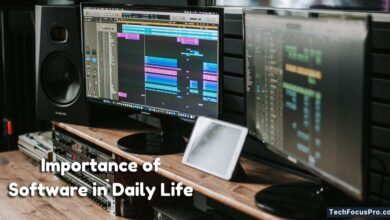How is SaaS Software Distributed?

In the active world of digital technologies, Software as a Service (SaaS) has transformed how we use and access software. No longer are we kept to the traditional model of purchasing and installing software on specific devices.
SaaS offers a more flexible, scalable, and profitable solution by distributing software by the cloud. This advanced approach allows users to access applications straight from the web, without the irritations of hardware limitations, software updates, or compatibility issues.
Whether for business operations, personal efficiency, or creative projects, SaaS has become a crucial tool in our daily digital regime.
Read on to discover How is SaaS Software Distributed? the mechanisms behind SaaS distribution and how it’s determining the future of technology practice.
The Mechanisms of SaaS Distribution: How is SaaS Software Distributed?
Cloud Hosting
Cloud computing is like leasing storage and computing influence from someone else’s computer. Imagine you have an app but don’t want to buy a powerful computer to run it. As an alternative, you rent space on a big, powerful computer located somewhere else. This allows you to use as much or as little space and power as you need, without owning or maintaining the big computer yourself.
Role of Cloud Hosting in SaaS Distribution
Cloud Hosting plays a vital role in bringing Software as a Service (SaaS) applications. It’s like the pillar that supports and carries these web-based apps to users everywhere. With cloud hosting, when you use a SaaS app, you’re essentially accessing a program that’s running on those big, powerful computers in the cloud.
This means that no matter where you are or what device you’re using, as long as you have the internet, you can use the app with comfort. It confirms that the SaaS applications are always available, scalable according to demand, and up-to-date without needing users to download or install everything on their devices.
Subscription Models
Subscription models are a way businesses sell their products or services for a steady fee, usually monthly or yearly. It’s like contributing to a magazine where you pay to get new issues repeatedly.
Different Types of Subscription Models
- Pay-As-You-Go: This model controls users built on how much they use the service. Think of it like a phone plan where you pay for the data you use.
- Freemium: Here, basic features are free, but you pay for best or progressive features. It’s like using a music app for free but gainful if you don’t want ads.
- Flat-Rate: This is a humble, one-size-fits-all method where everyone pays the same price for the same service level, similar to a Netflix subscription.
- Tiered: Bids different levels or “tiers” of service at dissimilar prices. The more you pay, the more features or benefits you get.
Benefits of Subscription Models for Users and Providers
- For Users
Flexibility: Users can choose a plan that fits their needs and budget, and change or cancel anytime.
Cost-Effectiveness: Instead of a large upfront cost, users pay smaller, more manageable amounts.
Updates & Improvements: Subscribers automatically get the latest features and updates.
- For Providers:
Steady Income: Regular payments from subscribers mean predictable, steady income.
Customer Loyalty: Subscription services can build a long-term relationship with users, increasing loyalty.
Scalability: Providers can easily scale their service, offering different tiers or expanding their subscriber base.
Subscription models have changed the way we use and pay for services, making it easier and more convenient for both users and providers.
Multi-Tenant Architecture
Multi-Tenant Architecture is like living in a flat building where everybody has their own space but shares the building’s substructure, like silos and water pipes. In the context of SaaS (Software as a Service), it means that a single example of the software serves multiple clients or “tenants.”
This system is vital because it allows for well-organized use of resources, making it informal to manage and update the software for all users at once.
How Multi-Tenancy Enables Scalability and Cost Efficiency?
Think about multi-tenancy as a tool that helps the software raise with its user base, without making things more difficult or exclusive. As the software runs on a shared infrastructure, it’s like adding more flats to a building without demanding to build new elevators or lay new pipes for each one.
This way, as more tenants (users) come in, the system can accommodate them without needing important additional costs or properties.
For users, this means they can enjoy a dependable, scalable service at a lower cost, making multi-tenant architecture a win-win for both providers and users in the SaaS creation.
Access through Web Browsers
Access to SaaS applications over web browsers plays an important role in the unified delivery and use of these cloud-based facilities. Here’s a nearer look:
The Role of Web Browsers in Accessing SaaS Applications
Web browsers act as an entrance for users to relate with SaaS applications without the need for outdated software downloads and installations.
They allow workers to log in and use these applications from effectively anywhere, provided there’s an internet connection. This availability is akin to visiting your Favorite website; you simply type the URL, and you’re there.
Advantages of Web-based Access Over Traditional Software Installation
Suitability and Speed: Accessing SaaS applications done by a web browser removes the need for lengthy software installation processes. It’s like viewing a movie online VS having to download it first.
Reduced Hardware Dependency: Meanwhile the heavy lifting is done on the cloud server, users don’t need influential devices to run the applications, expansion the user base to include those with less innovative technology.
Ease of Updates: With web-based SaaS applications, updates are made on the server side, meaning that users always contact the latest variety without having to do everything. It’s like always having the latest news at your fingertips without having to buy a newspaper.
Cross-Platform Compatibility: Web browsers on different devices and working systems can access the same SaaS applications, making it extremely flexible for users switching between devices.
The Role of APIs in SaaS Distribution
Definition and Purpose of APIs in SaaS
APIs, or Application Software design Interfaces, assist as the building blocks in the building of SaaS applications, allowing different software components to connect with each other. In the land of SaaS, APIs are vital for allowing the software to interrelate with external services and applications.
Their purpose extends outside simple connectivity; APIs enable the unified exchange of data and functionality, making SaaS solutions more multipurpose and combined.
This means that businesses can influence SaaS applications to their full potential by tailoring and participating them according to their unique processes and workflows.
How APIs Facilitate Integration and Customization of SaaS Solutions
APIs are the key organizers in the customization and addition of SaaS solutions into existing business systems. Through APIs, SaaS applications can easily become part of a larger network of business tools, coordinating data and workflows across different platforms.
This interoperability is important for businesses looking to automate processes, improve productivity, and provide bespoke user practices. By using APIs, designers can tailor SaaS solutions to meet exact business needs, adding or adapting features without changing the essential application.
Fundamentally, APIs empower businesses to mold SaaS applications into exactly what they need, confirming that these solutions drive worth and competence across operations.
Security Measures in SaaS Distribution
Confirming the security of SaaS (Software as a Service) applications is essential, in view of that data and applications are hosted remotely on the cloud. Here’s a easy breakdown of what that involves:
Common Security Challenges for SaaS
- Data breaches: Just like someone nagging into a locked room, unlawful users might try to access sensitive info kept in SaaS applications.
- Identity theft: This happens when someone pretends to be someone different to gain illegal access, similar to using a stolen key.
Strategies and Technologies for Enhancing SaaS Security
- Encryption: Think of encryption like revolving a readable book into a secret code that only few people can understand. This defends data both when it’s kept and when it’s being sent from one place to another.
- Access Control: This is like having a security guard at a club door, checking IDs before allowing anyone in. In SaaS, it confirms only official people can access certain data or features.
- Regular Updates and Patch Management: Keeping software updated is like fixing a boundary to keep snoopers out. It helps defend against known susceptibilities.
- Multi-Factor Authentication (MFA): MFA adds an extra step to the login process, like a club needing a password and an ID. It makes it much harder for illegal users to gain access.
By participating in these strategies, SaaS providers can better defend their platforms and users’ data from common security fears, making the SaaS environment a harmless place for everybody.
The Future of SaaS Distribution
How is SaaS Software Distributed? The future of SaaS (Software as a Service) distribution looks extremely exciting, with developing technologies like AI (Artificial Intelligence) and machine learning leading the method.
Think, having software that not only solves your glitches but also learns and familiarizes you to do it better over time. That’s where AI and machine education come in, making software smarter and more modified for users.
This development means we might soon see SaaS products that are far more instinctive, forecasting our needs and contribution solutions before we even understand we need them.
Plus, the way we get our hands on these SaaS tools is likely to become more efficient and accessible. The future appears to be all about smarter software, simpler access, and solutions that feel like they were made just for you.
FAQs about How is SaaS Software Distributed?
What is SaaS?
SaaS is a distribution in which applications are held by a third-party provider and made accessible to customers over the Internet.
Can SaaS software be modified?
Many SaaS applications offer customizable options that allow businesses to adapt the software according to their precise needs and necessities.
How is SaaS software distributed?
SaaS software is scattered over the Internet. Providers host the software on their servers, manage the substructure and software updates, confirming the application is available to users anytime and wherever, if they have internet access.
How are SaaS products delivered?
SaaS products are carried directly to the user’s device over the internet. Upon promising to the service, users can directly access the application through a web browser or, in some cases, an exact client application planned for the service, without the need for out-dated physical or downloadable software installations.











